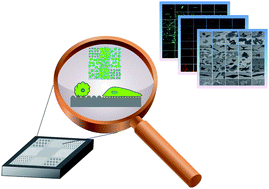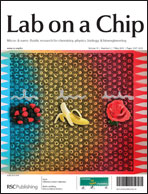We have fabricated a nanodevice composed of a matrix of nine nanodot arrays with various dot sizes, ranging from a flat surface to 10 nm, 50 nm, 100 nm, and 200 nm arrays. HELA, C33A, ES2, PA-1, TOV-112D, TOV-21G, MG63, and NIH-3T3 cells were seeded onto the device and cultured for three days. To evaluate the size-dependent effect of nanodot arrays on cell growth, indices corresponding to cell proliferation, apoptosis, cell adhesion, and cytoskeletal organization were defined. VD50 is defined as the diameter of nanodots on which 50% of the cell population remains viable. AD50 is defined as the diameter of nanodots on which 50% of the cell population appears to have an apoptosis-like morphology. FD50 is the diameter of nanodots that promotes the formation of 50% of the focal adhesions compared to cells grown on a flat surface. CD50 is defined as the diameter of nanodots on which cells have half the amount of microfilament bundles compared to cells grown on a flat surface. We were able to distinguish between the invasive ability of HELA versus later-staged C33A cells. Ovarian cancer cell lines (ES2, PA-1, TOV-112D, and TOV-21G) also exhibited differential growth parameters that are associated with cell type, grade, and stage. Modulation of the growth of MG63 cells was also achieved. More broadly, we have established a platform that can be used to assess basic parameters of cell growth. A simplified fabrication process ensures mass production and lowers cost. According to our results, the device is capable of distinguishing among cancer cell lines at various stages and also provides basic design parameters for artificial implants. Our device will serve as a convenient and fast tool for tissue engineering and cancer treatment.


 Please wait while we load your content...
Please wait while we load your content...